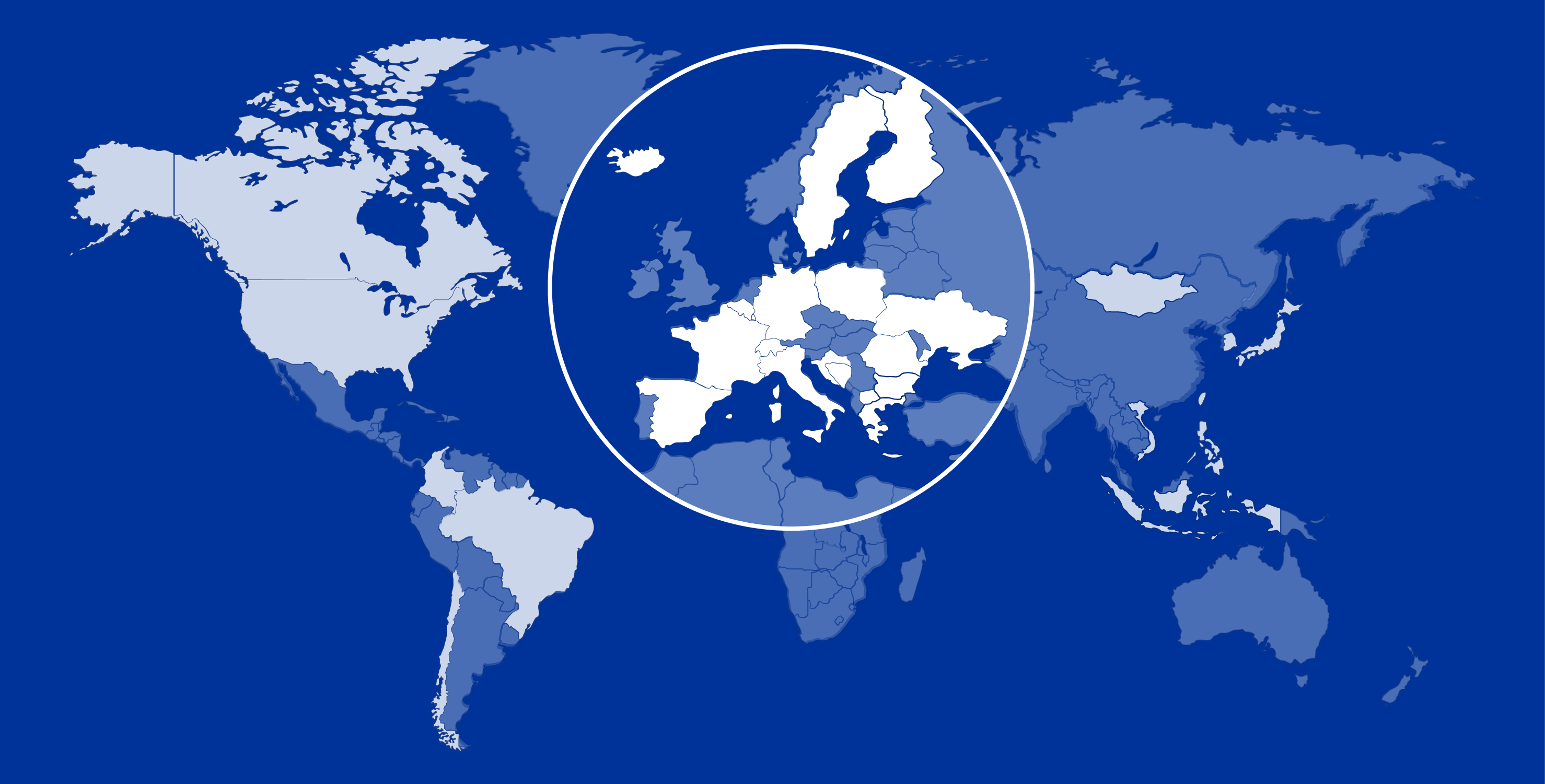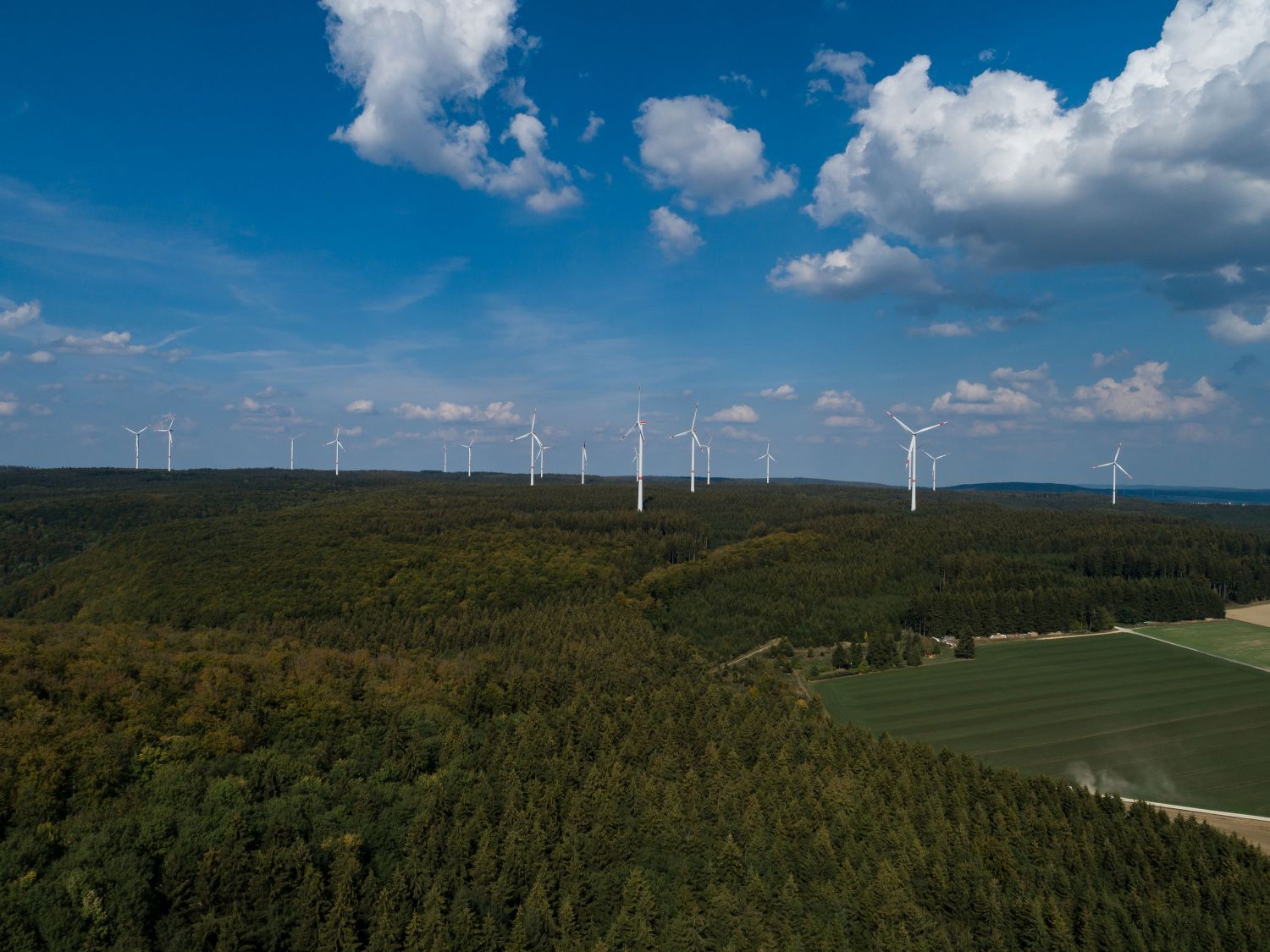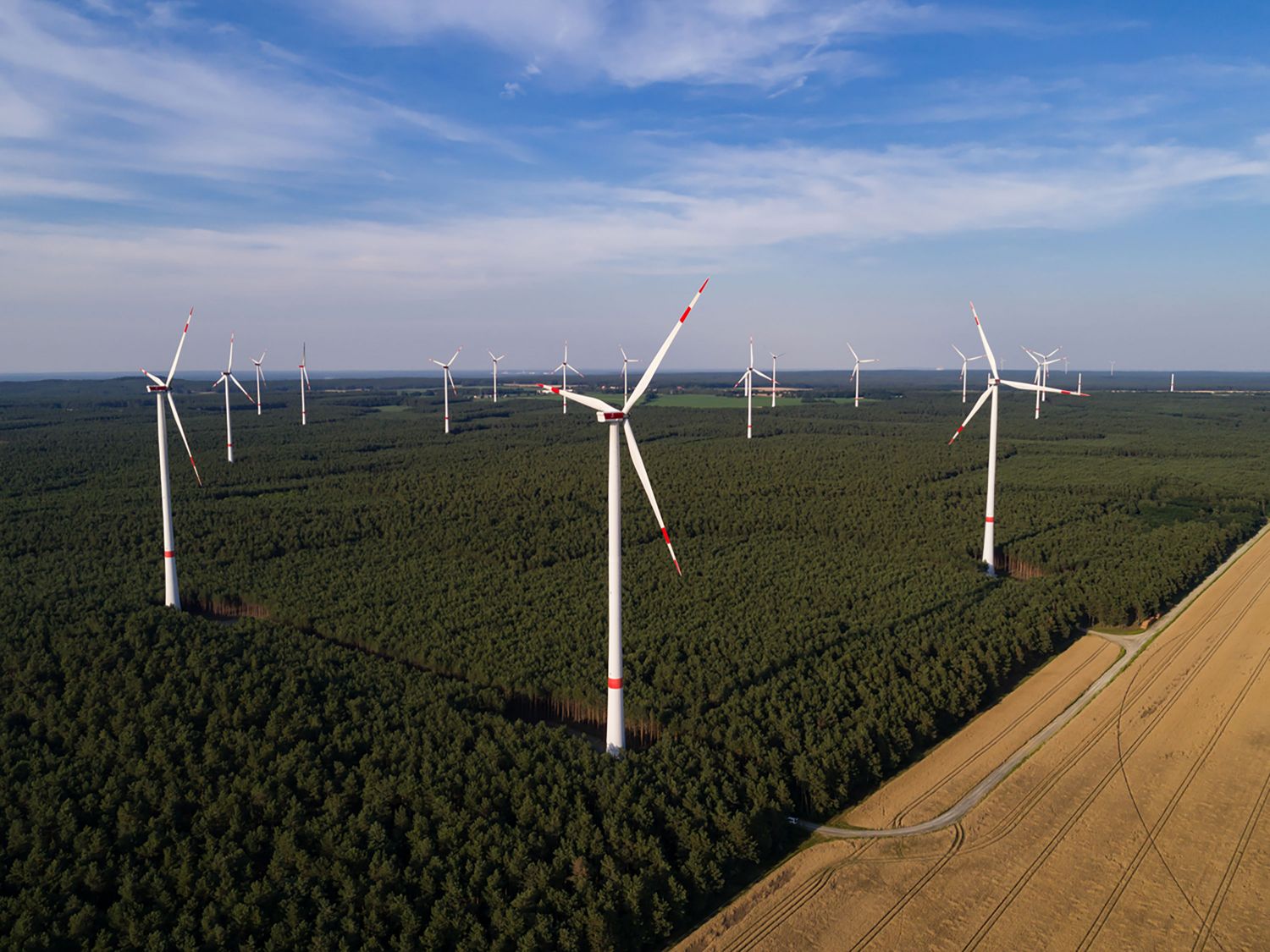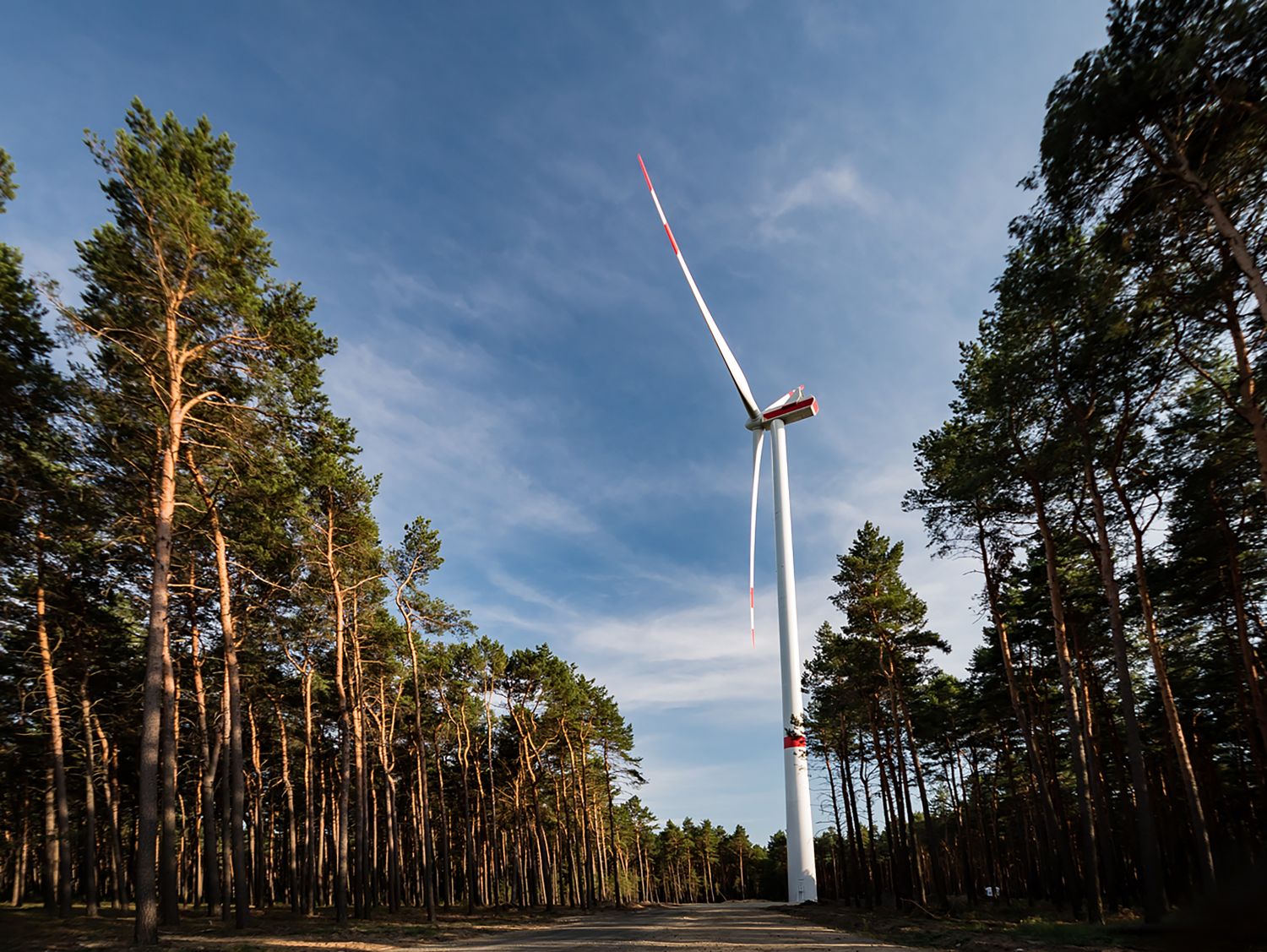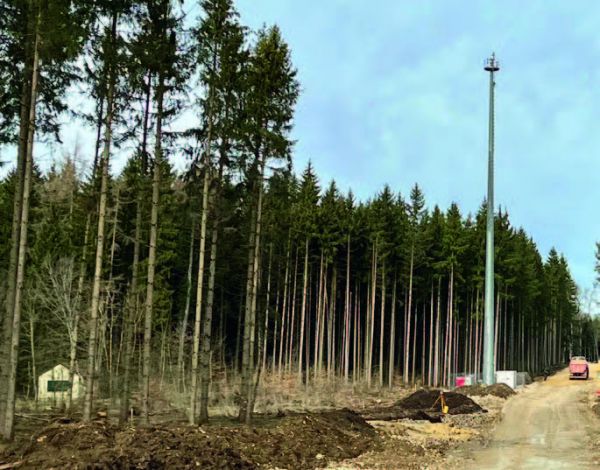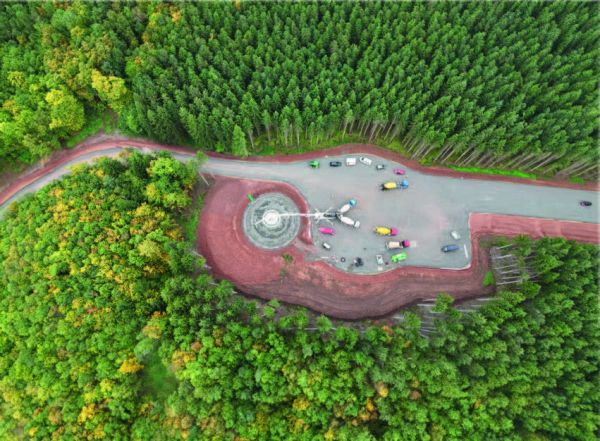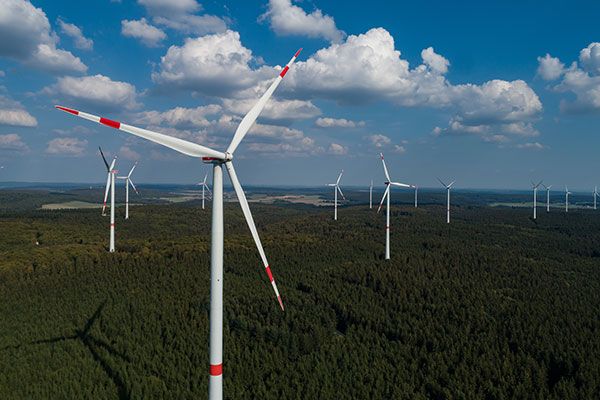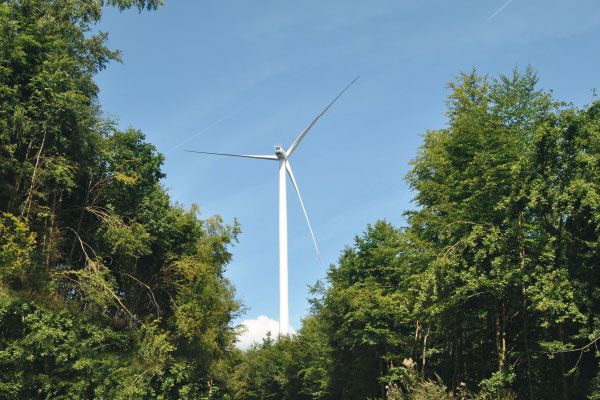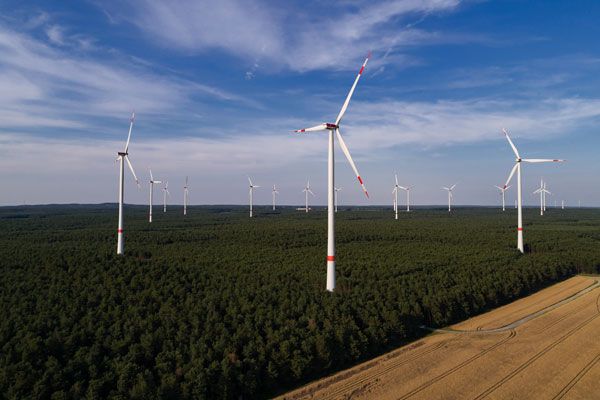Wind energy in the wood
With more than 83 million people in an area of around 35.7 million hectares, Germany is a densely populated country, while at the same time almost one third of the land is forested. This makes the Federal Republic one of the most forested countries in the EU.
But our forests are not well. Besides heavy storms, both extreme droughts and the high summer temperatures over recent years have severely affected the stability of the forest ecosystem and thus the health of the trees. While the mass proliferation of varies species of bark beetle, primarily among spruce stocks, is leading to visible damage far and wide, the deciduous forests are also suffering massively from extreme drought and heat.
What’s more, the fact that forests represent a suitable location for wind energy is nothing new. For example, turbines have been located in the forests in Germany for many years already. According to FA Wind, at the end of 2023, there were 2,450 turbines which corresponds to around 9% of all turbines and 11% of total onshore output. Not surprisingly, the largest proportion is to be found in the richly forested states of Brandenburg, Hess and Rhineland-Palatinate with a total of 1,530 turbines. In some federal states, the use of woodland for wind energy was even completely forbidden by law. However, the Federal Constitutional Court found that this ban was incompatible with our Basic Law.
There are in fact firm arguments in favour of using selected forested areas. Forested regions are frequently less densely populated which in turn has a beneficial impact on meeting the relevant setback criteria as well as on noise and shadow effects. In addition, forests are often situated on ridges which offer advantages with respect to the wind conditions over valleys which tend to be used for agriculture, for example.
If suitable areas are used for wind energy, the lease payments can provide predictable revenues thereby helping to secure sustainable forestry. Although the erection of wind turbines represents a fundamental intervention in nature and the landscape, offsetting measures and replacement work support reforestation with climate-adapted trees. On average, each turbine takes up around 0.46 hectares of forested area on a permanent basis. The upgrading of forest trails is included in this calculation and often leads to an improvement in the forest infrastructure. In addition, the sites required for assembly and construction machinery can be used by the forest owner, e.g. for timber storage or hunting.
Our aim is to take up as little space as possible and to keep clearances to a minimum. This requires sophisticated logistics and the individual assembly of rotor blades. Not only do we pay attention to these factors from the very first planning stage, but we also examine multiple aspects of nature conservation including water and soil protection. For example, old trees offer diverse habitats for animals, primarily for rare, strictly protected species living in the forest such as the Black Stork, the Eagle Owl or the dormouse. But the theme of monument protection also features in the forest in the form of historical ramparts or barrows. In addition, we pay attention to the significance of fire prevention which has become ever more important as a result of the summer heat and extreme droughts of recent years, and we see confirmation of our proven concept of developing fire prevention strategies at an early stage.
In order to intervene as little as possible in the sensitive forest ecosystem, wpd relies from the outset on very close coordination with the responsible authorities, local stakeholders and in particular the forest owner:
- Our in-house team of skilled forestry experts understand the numerous challenges of forestry and support the relevant technical departments during planning and implementation.
- We obtain extensive nature conservation and species protection reports from independent, external specialist offices.
- wpd uses existing access lines and
- any upgrading required is integrated with the existing infrastructure.
- The preference is to set up pre-assembly sites outside the forest.
- wpd pursues the preferential use of calamity-hit areas,
- respect for forestry and hunting as well as
- minimal intervention through the project-specific selection of optimal assembly methods.
